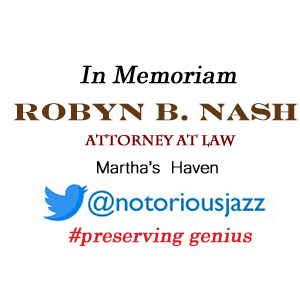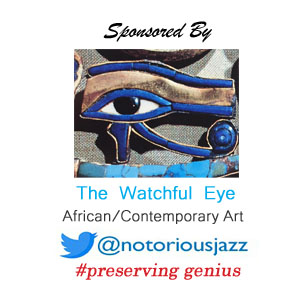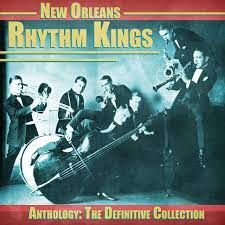
Daily Dose Of Jazz…
Martin Abraham, better known as Chink Martin, on June 10, 1886 in New Orleans, Louisiana. He played guitar in his youth before settling on tuba as his main instrument. He played with Papa Jack Laine’s Reliance Brass Band around 1910, and worked in various other brass bands in the city in the 1910s.
In 1923, he traveled to Chicago, Illinois and played with the New Orleans Rhythm Kings with whom he made his first records. He also recorded guitar duets with Leon Roppolo, but these unfortunately were never issued. Returning to New Orleans with the Rhythm Kings in 1925, Martin made further recordings with them.
He also played with the Halfway House Orchestra with which he recorded on both tuba and string bass, the New Orleans Harmony Kings, and the New Orleans Swing Kings. In the 1930s, Martin worked as a staff musician at WSMB radio. He continued to play tuba for his entire career, though he also played and recorded on the double-bass from at least the 1920s onward.
He played with dozens of noted New Orleans jazz musicians, appearing on record with Sharkey Bonano, Santo Pecora, Pete Fountain, Al Hirt, and others. Tubist Chink Martin, who released one album under his own name on Southland Records in 1963, transitioned on January 7, 1981 in New Orleans.
More Posts: bandleader,history,instrumental,jazz,music,tuba
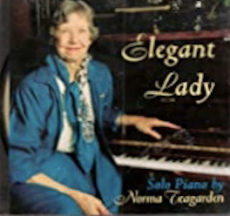
Daily Dose Of Jazz…
Norma Louise Teagarden was born in Vernon, Texas on April 28, 1911 into a musical family that consisted of her mother Helen, who played ragtime piano and taught; her brothers Charlie, a trumpeter, Clois, a drummer, and Jack, a trombonist. She performed with the latter in the 1940s and 1950s.
She performed on piano and violin during the early part of her career, which began in Oklahoma City, Oklahoma. In the 1920s she moved to New Mexico and worked in territory bands, returning to Oklahoma City in the 1930s. After another stint there she moved to California in the 1940s touring with her brother Jack from 1944–1947 and from 1952–1955.
Outside the Teagarden family, Norma worked with Ben Pollack, Matty Matlock, and Ray Bauduc. Eventually settling in San Francisco, California she often performed on solo piano and with bandleader Turk Murphy.
Pianist and violinist Norma Teagarden transitioned on June 6, 1996.
More Posts: bandleader,history,instrumental,jazz,music,piano,violin
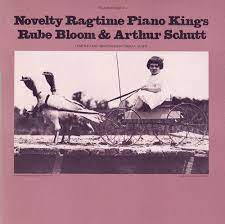
Daily Dose Of Jazz…
Reuben Bloom was born April 24, 1902 in New York City, New York to Jewish parents. During the 1920s he wrote many novelty piano solos, recorded for the Aeolian Company’s Duo-Art reproducing piano system various titles including his Spring Fever. His first hit came in 1927 with Soliloquy; his last was Here’s to My Lady in 1952, which he wrote with Johnny Mercer. In 1928, he made a number of records with Joe Venuti’s Blue Four for OKeh, including five songs he sang, as well as played piano.
He formed and led a number of bands during his career, most notably Rube Bloom and His Bayou Boys, which recorded three records in 1930. The Bayou Boys consisted of Benny Goodman, Adrian Rollini, Tommy Dorsey, Mannie Klein and Frankie Trumbauer in the Sioux City Six.
His I Can’t Face the Music, Day In Day Out, Fools Rush In (Where Angels Fear To Tread) and Give Me The Simple Life has become a part of the Great American Songbook and jazz standards.
During his career, he worked with many well-known performers, including those mentioned above and Ruth Etting, Stan Kenton, Jimmy Dorsey and collaborated with a wide number of lyricists, such as Ted Koehler, and Mitchell Parish.
Pianist, arranger, bandleader, recording artist, vocalist, and author Rube Bloom published several books on piano method before he transitioned on March 30, 1976 in his home city.
More Posts: arranger,author,bandleader,composer,history,instrumental,jazz,music,piano,vocal
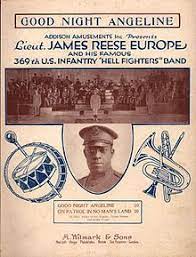
Daily Dose Of Jazz…
James Reese Europe was born on February 22, 1881 in Mobile, Alabama and in 1891 his family moved to Washington, D.C. In 1904 he moved to New York City and six years later he organized the Clef Club, a society for Black Americans in the music industry. In 1912, the club, with its 125 members who played in various configurations, made history when they became the first band to play a proto-jazza concert at Carnegie Hall for the benefit of the Colored Music Settlement School.
The importance of this historic concert is that it took place 12 years before the Paul Whiteman and George Gershwin concert at Aeolian Hall, and 26 years before Benny Goodman’s famed concert at Carnegie. The Clef Club’s performances played music written solely by Black composers, including Harry T. Burleigh and Samuel Coleridge-Taylor.
In 1913 and 1914 Jim made a series of phonograph records for the Victor Talking Machine Company. These recordings are some of the best examples of the pre-jazz hot ragtime style of the U.S. Northeast of the 1910s, predating and protecting the idea that the Original Dixieland Jass Band recorded the first jazz pieces in 1917 for Victor.
Europe was known for his outspoken personality and unwillingness to bend to musical conventions, particularly in his insistence on playing his own style of music. During World War I, Europe obtained a commission in the New York Army National Guard, where he fought as a lieutenant with the 369th Infantry Regiment otherwise known as the “Harlem Hellfighters” when it was assigned to the French Army. He went on to direct the regimental band to great acclaim. They made their first recordings in France for the Pathé Brothers.
Returning home in 1919 he made more records for Pathé with Noble Sissle and continued to lead his band. During a talk backstage with two of his drummers, Steve and Herbert Wright about their stage behavior, Herbert got agitated and stabbed Europe in the neck with a pen knife. The show went on, Jim went to the hospital but doctors were unable to stem the flow of blood.
Arranger, composer and bandleader Jim Europe, who also played piano and violin, and was the leading ragtime and early jazz figure on the Negro music scene of New York City in the 1910s, transitioned on May 9, 1919.
More Posts: arranger,bandleader,composer,history,instrumental,jazz,music,piano,violin
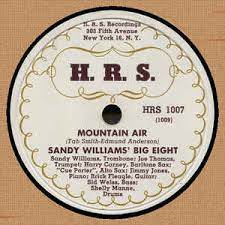
Daily Dose Of Jazz…
Alexander Balos “Sandy” Williams was born on October 24, 1906 in Summerville, South Carolina, the son of a preacher. The family of thirteen moved to Washington D.C. when he was very young however, losing their parents six months apart, they were sent to an orphanage in Delaware. There he joined the school band, but was put on tuba rather than trombone despite his requests. Taking private lessons while attending Armstrong High School, he occasionally played with his professor’s sons, and played with several bands before he started playing with the Lincoln Theater pit band.
Fletcher Henderson strongly influenced Williams jazz musicianship which received local notice. He played with Claude Hopkins, and later in 1929 joined Horace Henderson. He became a staple player in the Chick Webb band from 1933-1940 where he later worked with Ella Fitzgerald. Through the Forties he went on to work with other bands including Cootie Williams, Sidney Bechet, Duke Ellington, Art Hodes and Roy Eldridge, with whom he toured Europe in 1947.
By the early Forties Sandy was suffering from alcoholism, and despite his attempts to become sober, he continued to drink with many of his band leaders until he suffered from a severe breakdown with his health in 1950 causing him to retire from music.
Although he attempted to return to music, his dental health affected his embouchure causing him to quit music entirely. Trombonist Sandy Williams passed away on March 25, 1991 in New York City.
More Posts: bandleader,history,instrumental,jazz,music,trombone




